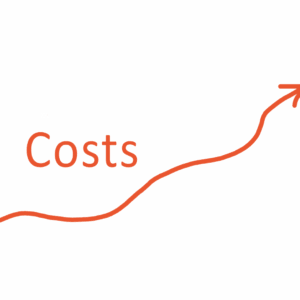Personalized printing has evolved from a gimmick to a core marketing advantage. But with great power comes a hidden weakness: bad data.
Variable Data Printing (VDP) gives you the ability to personalize every piece of a print run—but that power is wasted if the underlying data is outdated, inconsistent, or incorrect. When your data is dirty, even the most advanced personalization strategy will collapse under the weight of inaccuracy.
This post will show you why data hygiene is critical to VDP success, what poor data really costs, and how to take back control with a practical, scalable strategy.
What Is Variable Data Printing (VDP) and Why It Matters
Variable Data Printing is a technology that lets you create print materials with customized elements for each recipient—without stopping the press.
Instead of one-size-fits-all campaigns, VDP lets you:
- Target by behavior: Include a custom product image based on past browsing.
- Geotarget content: Change headlines based on location.
- Embed personal links: Drive to a unique landing page via QR or PURL.
But remember: the print file is only as good as the data behind it. A typo, outdated address, or duplicated contact can ruin an entire print run.
TL;DR
You can have the world’s best print templates and still fail if your data is dirty. From duplicated records to outdated contacts, messy data will quietly sabotage your variable data printing (VDP) campaigns. This guide outlines the financial and reputational risks—and five practical strategies to turn your data into a high-ROI machine.
Key Takeaways
- Dirty data wastes money and erodes trust—every undelivered mailer or inaccurate message chips away at ROI and brand credibility.
- Clean data boosts VDP performance dramatically. Expect 2x to 10x higher response rates when your dataset is clean and properly segmented.
- You don’t need perfection, just progress. Starting with audits and basic cleansing goes a long way.
- Automation and governance make scaling easier. Today’s tools let you automate hygiene without adding headcount.
- Data hygiene is everyone’s job. Marketing, sales, IT, and leadership all play a role in sustaining a clean data ecosystem.
The High Cost of Dirty Data in VDP
Wasted Print and Postage Budgets
Every undeliverable piece of mail is money down the drain. Multiply that across thousands of contacts, and the losses grow fast.
Real-world impact: A single undelivered mailer costs more than just postage. It represents a missed conversion, a lost lead, and a blown opportunity to create customer delight.
Damaged Brand Credibility
When a customer receives mail with their name misspelled, or worse, addressed to someone else entirely, it breaks trust. Repeat it, and you risk being ignored or even reported.
High-risk verticals: In regulated industries like healthcare or automotive, sending the wrong personalized message can result in legal action or fines.
Operational Chaos and Compliance Risk
Sales teams waste time chasing leads that don’t exist. Marketing relies on inaccurate segmentation. Leadership bases decisions on faulty dashboards.
The cost: Productivity plummets, forecasts are wrong, and compliance exposure skyrockets. Bad data is a silent killer of strategy.
Lost Engagement from Personalization Failures
If your campaign drives users to personalized pages with incorrect info—wrong name, wrong product, wrong deal—they bounce. Fast.
Why this matters: Today’s consumers expect seamless personalization. Anything less feels clumsy and inauthentic.
How Clean Data Supercharges VDP ROI
- Personalization That Converts
Clean data lets you truly segment by behavior, interest, geography, and history. You can:
- Recommend products they actually want
- Reference past interactions for relevance
- Create urgency with time-sensitive, relevant offers
Example: A propane company used VDP to double its response rate to 30% by syncing print messaging with CRM behavior.
- Streamlined Workflows and Stronger Decisions
When marketing, sales, and ops all rely on one clean dataset:
- Campaigns run faster
- Forecasts become reliable
- Everyone can act on the same version of the truth
Significant benefit: You eliminate the silos and guesswork that waste time and create friction across departments.
- Deeper Customer Trust and Loyalty
Clean data = more relevant messages. Relevant messages = more trust.
How it plays out: A personalized offer based on a user’s recent website visit feels helpful. A generic message does not.
Trust leads to loyalty. Loyalty leads to repeat business. Repeat business leads to profit.
5 Must-Have Strategies to Fix Dirty Data Fast
 Proactive Cleansing & Standardization
Proactive Cleansing & Standardization
Before you print anything, do a deep cleanse. Look for:
- Misspelled names
- Inconsistent formatting (John Smith vs. Smith, John)
- Empty fields and outdated info
How to fix it: Utilize tools such as Excel scripts, SQL queries, or data cleaning software to automate standardization. Don’t wait until you’re mid-campaign.
Deduplication and Identity Resolution
Duplicates are silent killers. They waste postage, confuse recipients, and hurt your metrics.
Your action plan:
- Use deduplication software to find exact and fuzzy matches.
- Merge profiles across systems (CRM, email, forms, POS).
Pro tip: Identity resolution software can match across devices and platforms, creating an accurate 360° view.
Ongoing Audits and Data Validation
Data decays. People move. Jobs change. Emails bounce.
Make audits a habit. At least quarterly, validate addresses using tools like:
- CASS: Confirms postal format validity.
- NCOA: Catches address changes from USPS.
Bonus tip: Flag high-bounce emails or low-engagement contacts for manual review.
- Automation Tools for Scale
Manual cleanup is slow. Automation makes data hygiene scalable.
Tools to explore:
- CDPs: Centralize, clean, and segment data automatically.
- VDP software: Validate records, pre-print, and preflight for missing images or broken links.
Significant gain: You reduce human error, speed up production, and scale campaigns with confidence.
- Data Governance Culture
No tool can save you from a team that doesn’t care about data quality.
Start here:
- Create clear policies for how data is entered, stored, and accessed.
- Train every team on why data matters and how their role affects hygiene.
Why this works: When data hygiene becomes part of your culture, errors get caught early, and everyone takes ownership.
FAQs
What is the biggest mistake printers make with VDP data?
Treating data hygiene as a one-and-done project. It’s a continuous process.
Can off-the-shelf tools help with deduplication?
Yes. CRMs, CDPs, and specialty software all offer robust deduplication capabilities.
How often should I run a data audit?
At a minimum, quarterly. Monthly is ideal for large or fast-moving datasets.
Is this just a marketing concern?
No. Dirty data impacts finance, ops, sales, and legal compliance. It’s an enterprise-wide issue.
What’s the ROI of clean data in VDP?
Studies show a 2x to 10x boost in response rates compared to generic print campaigns.
Conclusion
Variable Data Printing is a powerful tool—but it’s only as smart as the data behind it.
Clean data doesn’t just save you money. It makes your messaging sharper, your customer relationships stronger, and your results more predictable.
Start small. Clean your list. Deduplicate your CRM. Run quarterly audits. Build a governance mindset. Every step moves you toward a high-ROI, high-trust marketing engine.
Want to see how other print leaders are fixing their dirty data and boosting ROI?


 Proactive Cleansing & Standardization
Proactive Cleansing & Standardization


